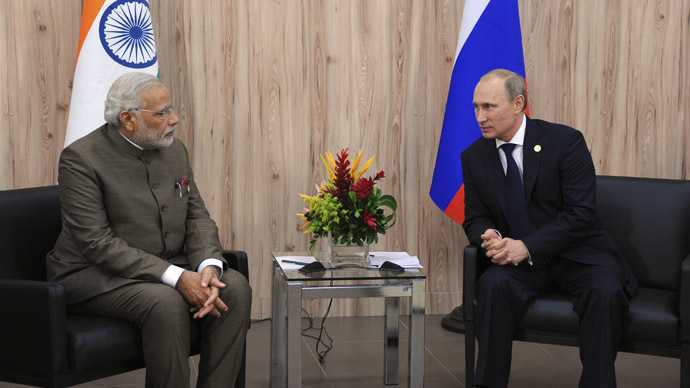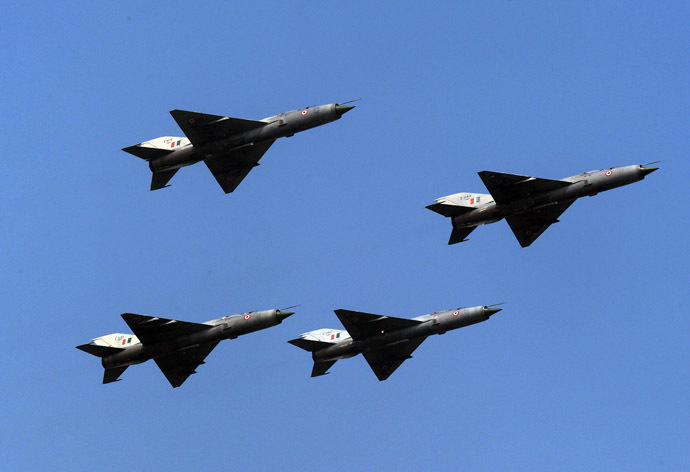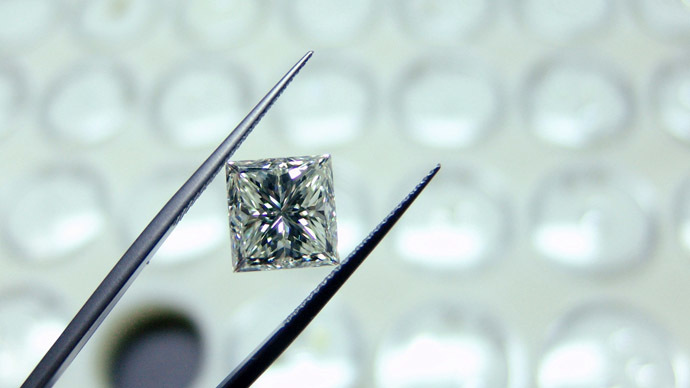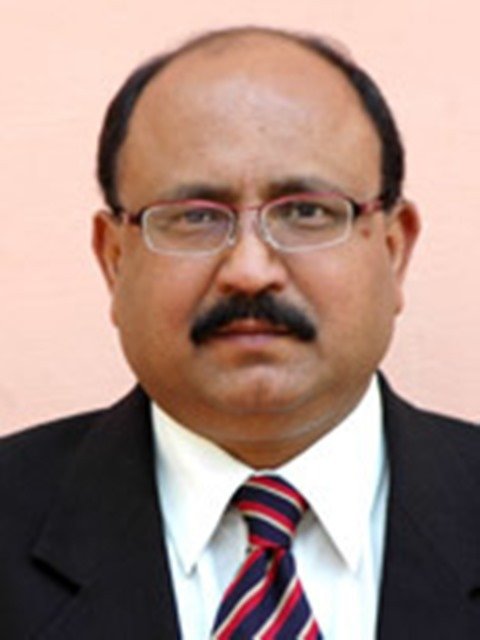Putin’s India visit to focus on deeper trade & investment ties

A much-needed boost in Indo-Russian ties may be just around the corner. President Vladimir Putin will visit India next month for a 15th annual bilateral summit, held for the first time with India’s new prime minister, Narendra Modi.
India-Russia bilateral relations have been low key for a couple of years. There are many reasons for this sorry state of affairs – sorry because New Delhi and Moscow have had very close strategic ties for almost half a century now.
One of the bulwarks of Indo-Russian synergy was close defense ties and robust sales of weapon systems from Russia to India. But over the years, the Indian defense procurement policy has undergone a sea change, with India emphasizing self-reliance and indigenization.
Perhaps Russia failed to see it coming and alter its defense sales program suitably and rapidly enough to keep India in good humor. Moreover, India was increasingly spoilt for choice as newer defense partners emerged while the existing ones like the United States, Israel and France went from strength to strength.
So much so, in fact, that Russia has recently been nudged aside from its #1 position in defense exports to India by the US.
This was unthinkable a decade ago, but today it is a stark reality. Indian Prime Minister Narendra Modi’s pet project, the “Make in India” marketing campaign, is another concerted move aimed at greater indigenization that will inevitably make things more difficult for the Russian defense industry.
But now finally the two strategic partners have begun to adjust to new realities and deepen their bilateral cooperation in newer areas, in such non-defense areas as agriculture, food processing, hydrocarbons, coking coal, fertilizers, mining, civil aviation, infrastructure and rough diamonds.

India and Russia have also identified three more areas for deepening their cooperation: smart cities, the Customs Union of Belarus, Kazakhstan and the Russian Federation for trade in goods and services and enhancement of bilateral trade through the International North South Corridor Project (INSTC).
These were some of the concrete deliverables that emerged from the 20th session of the India-Russia Inter-Governmental Commission on Trade, Economic, Scientific, Technological and Cultural Cooperation (IRIGC-TEC) held in New Delhi on November 5. The Indian team was led by the Minister of External Affairs and the Chairman of the Indian side of the Commission, Sushma Swaraj, while the Russian team was led by Deputy Prime Minister Dmitry Rogozin, who also doubles up as the chairman of the Russian side of the Commission (IRIGC-TEC).
The Commission took four important decisions:
1. Deep Focus on Customs Union
The Commission decided to set up a Joint Study Group for the proposed agreement between India and the Customs Union of Belarus, Kazakhstan and the Russian Federation for trade in goods and services. This is the first time that India and Russia have agreed to start negotiations on the proposed Free Trade Agreement (FTA) between India and the Customs Union and the Joint Study Group is expected to fast-track the FTA talks.
2. Giving high priority to the International North South Corridor Project (INSTC).
This is a sound economic policy, though one wonders why India and Russia could not put a laser beam focus on the INSTC earlier. Though belated, the idea is to enhance bilateral trade through the INSTC by freight forwarders and exporters particularly to bolster trade in the agriculture and food processing industries.
3. New Priority Areas for Enhancing Trade
If stagnating Indo-Russian bilateral trade has to beefed up, then the two sides have to diversify their trade basket. The Commission has rightly identified new priority areas such as hydrocarbons, coking coal, fertilizers, mining, civil aviation, infrastructure and trade in rough diamonds for achieving this objective.

4. Smart Cities
This is a completely new area of Indo-Russian cooperation. Russian conglomerate AFK Sistema has agreed to set up a Smart City in India, the details of which are likely to be made available after Putin’s talks with Modi in New Delhi next month.
This is actually a smart move by Russia and is a win-win situation for both sides. The Modi government has promised to build as many as 100 smart cities in the coming years. It has allocated a sum of nearly $1.2 billion in its budget for 2014-15 for launching preliminary work.
Powers such as China, Japan and Singapore have already been drafted in by India for its smart cities project. The Russian participation will be a good long-term investment, considering the very high number of smart cities that the Modi government has pledged to build.
Some other key decisions taken by the Commission can be summed up quickly. Indian company National Mineral Development Corporation (NMDC) and the Russian company ACRON have decided to work together for the development of potassium and magnesium deposits in the Talitsky mine in Russia’s Perm Region and the Partomchorr apatite-nepheline ore deposit in the Murmansk Region.
A number of Indian companies are also engaged with Russian partners for investment and joint collaboration projects in the energy, science and technology, and steel sectors.
The impressive range of upcoming Indo-Russian projects also includes a 200-250 MW power plant at Ulan-Ude by Bharat Heavy Electricals Limited (BHEL); a JV in India for production of Cold-Rolled Grain Oriented silicon steel (CRGO) grade steel by Rashtriya Ispat Nigam Ltd in collaboration with Russia’s NLMK; a Joint Supercomputer Center of the Russian Academy of Sciences; collaboration on various applications of High Performance Computing (HPC); and an India-Russia joint investment fund for supporting high-tech projects, including technology transfers.
It’s definitely good news that Indo-Russian relations are being revamped. Yet both sides realize the importance not only of staying engaged, but also of focusing on achieving concrete deliverables in all possible areas of cooperation in a timely fashion.
The statements, views and opinions expressed in this column are solely those of the author and do not necessarily represent those of RT.
The statements, views and opinions expressed in this column are solely those of the author and do not necessarily represent those of RT.













